A few weeks ago, I asked if any of you had questions on how to start a book…
…what with it being a new year and a time when people tend to start new projects. Check out last week’s question right here.
This time I have two similar questions about trying to decide what form a book should take.
Mary Ann, a hydrologist, is thinking of writing a book about rivers but can’t work out the format. She asks:
My Approach A would be straightforward: Choose a feature of a river, show a photo or sketch, and explain its significance to us or caddis flies or willows and such. Approach B would have me insert myself into the narrative, such as the magic I feel when coming upon an otter family skidding down a riverbank. Approach C would include other researchers and their stories. Approach D would incorporate a call to action, to support restoration and conservation work. You seem to have taken different approaches in your books, like Approach A in "Drunken Botanist" and Approach C in "The Tree Collectors." What influenced your decisions?
writes:
Two years ago, I made a graphic narrative of my life. The school i went to, the college, its learnings, the offices etc. I've experimented with a lot of mediums for that book. Now I don't know what to do with it. It's a good start. I'd love to know your thoughts on it.
Finding the right vessel for your story is tricky.
I know this dilemma well! Some writers start with the vessel: they want to write noir crime fiction, and they set out looking for stories that fit that vessel. But many of us have stories that we want to tell, and we don’t know how to begin until we’ve found the proper vessel for them. We’re afraid to put our stories in a tippy little canoe if what it needs is an ocean liner (there’s a water metaphor for you, Mary Ann).
My advice is to set out anyway.
Unlike a voyage down a river or across an ocean, you’re not going to drown if you set out in the wrong vessel. Start making stuff. Make a little of this and a little of that. Try one of each. Put words on paper. Fill a notebook or a Word document. Do some pencil sketches and some ink drawings and some paintings. Words and pictures are not finite. You will not run out!
It is not possible, in these early days, to make the wrong thing and find yourself in a bind and think “Oh no, I wasted days/weeks/ink/keystrokes that I’ll never get back and now I don’t have any left.” It doesn’t work that way! It’s more like going to the gym. The more you go, the stronger you get, and the more you can do.
This is not a time to conserve resources! This is a time to produce! The more you make, the more you will make. Trying different things is the best way to gather information about your options.
Also, you will develop the habit of thinking about your book, and the habit of sitting down every day or every weekend or whenever you have the time and actually making stuff, rather than ruminating over it.
Ruminating does not lead to answers. It leads to more ruminating. Making stuff leads to the accidental, free-floating, always-dancing-around-in-the-back-of-your-mind type of thinking that does, in fact, produce answers precisely because you’ve stopped trying to find answers and are instead making things with your hands.
Even if you make the “wrong” thing (there are no wrong things), making the wrong thing gives you something tangible to look at and say, “That’s not it, but now I know why that’s not right, and I have a different idea to try.”
Also, in the process of making a hundred wrong things, you will accidentally make some amazing things, usually when you’re bored and uninspired and maybe a little under the weather and you just dash something off because you told yourself you would. And weirdly, on one of those days, you’ll stumble into something new. Maybe it’ll be an idea you won’t fully develop for another ten years. But it’ll be there, on paper, real and tangible.
Finally: making something now doesn’t mean you can’t still explore your options and consider alternatives. It just means that while you’re doing that, you are MAKING STUFF.
Gather inspiration
Go to the bookstore, a real, brick-and-mortar bookstore, and look at books. Go to the library. Browse your friends’ shelves. Ask people for recommendations: bookish friends, booksellers, librarians. These people love to talk about books, and some of them actually get paid to do so! And of course, take another look at your own books, and think about the books you’ve read over the years that might have a shape, a form, that speaks to you.
You’re looking for books whose format fits your story. You might start in your category: books about rivers, for instance, but don’t stop there! Look at the books about birds and food and history and math.
Don’t focus only on new releases. Do you want to tell a story about an interesting, obscure moment in history—or the present day—that is both entertaining and thought-provoking? Maybe Dava Sobel’s surprise 1995 bestseller Longitude, at a slim 200 pages, is the right fit. But don’t limit your search to bestsellers! You can be inspired by obscure and unknown books!
I’m going to show you this book, Obi Kaufmann’s The Coasts of California, because you really have to see it to believe it:
This man has written an astonishing half-dozen of these illustrated field atlases of California and he has more in the works. While the format—the vessel—is something like a field guide, something like an encyclopedia, and something like an atlas, it is also dense and opinionated and poetic and utterly original.
Be open to non-book ideas
Maybe that cookbook or travel guide is better suited for a newsletter.
could’ve published a salad cookbook, and it would have been one of many salad cookbooks, but instead she started . I don’t want to make this about income or number of readers right now, but instead I want to point out that by turning her salad idea into a newsletter, she has so many options:Change up the format! Include stories and personal asides or don’t.
Write frequently or infrequently
Dig deep into a topic or theme, or skip it entirely
etc etc. Basically, she has a million options.
Or consider my friend
, who is launching a podcast right now called That Sinking Feeling, about the unexpected connection between her son’s ADHD and her dad’s career in the ship salvage business. That story could’ve been a book, a newsletter, a magazine article, a musical (kidding! maybe?) a documentary (she’s made one before, the incredible Chasing Portraits, about her search for her great-grandfather’s paintings after he was murdered in the Holocaust—and she also wrote a book of the same title) —or, you know, lots of things. She chose a podcast this time.Or maybe it’s a zine. For instance,
is making my heart explode with the beautiful zines she makes and sells on Etsy. Please go watch the video of her paging through this one, which is a visual essay about walking through the woods. You can read her newsletter , and if you get a paid subscription, she will send you actual real zines in the mail. And if you’re suddenly obsessed with this idea, please read , where you can learn about many more people doing great projects like this.Or maybe it’s abundant wonderful art and small amounts of handwritten text, along the lines of Maira Kalman’s brilliant book And the Pursuit of Happiness, which I’m once again going to have to show you because you have to see it to believe it:
Finding a publisher is another matter.
I encourage you to do all of the exploring I described above without giving too much weight to what publishers want. Find the thing that works for you and give it your best shot. Get as close as you can to your real, true vision.
Some books naturally and easily slide into the exact slot that publishers are looking to fill. Others don’t. Some of those perfect fits never find a publisher, or they do find a publisher, but they don’t sell, and the authors are left walking around with what Anne Lamott described as “haunted, abused, surprised looks on their faces, like lab dogs on whom very personal deodorant sprays have been tested.”
And some of those weird, hard-to-categorize books go on to find unexpected commercial success, like the above-referenced Longitude, which basically sparked a whole genre of science storytelling.
And some authors self-publish, or publish with a small, niche press, rather than compromise their vision. (An artist friend is doing this now, and I hope he’ll let me interview him about that process when his book comes out.) Many of us tweak our ideas here and there to fit the marketplace, because we’ve decided that tweaking a book idea in exchange for a paycheck is a better compromise of our creative values than, say, getting a job.
But this is getting long-winded, so I’ll leave that discussion for another day.
Ask me your questions about starting a book!
I’m having fun answering these questions, so keep asking them. Or post any kind of question or comment—I’m always happy to hear from you.
Supporters are drawing birds with ink and watercolor
Last week we did pencil sketches. This week we’re doing ink and watercolor. Drawing birds is a great way to learn how to draw just about everything else, an idea that I explained last week and am going to show you again this week, as I made a video of a mistake-riddled sketch and showed how I fixed it.
Supporters get weekly art tutorials delivered in their in-box, plus an archive that is honestly turning into a full-blown drawing course. If you can do it in a sketchbook, we’re into it. Or you can just subscribe because you like the free version and want to keep this whole enterprise afloat.
The bit at the end
Order signed copies of my new book, The Tree Collectors, from Broadway Books here in Portland.
Come find me on Instagram, or see paintings for sale- Right here
Order signed copies of some of my books from my husband’s bookstore, or order my books and many books I love at Bookshop.org
Take one of my online writing or art classes here




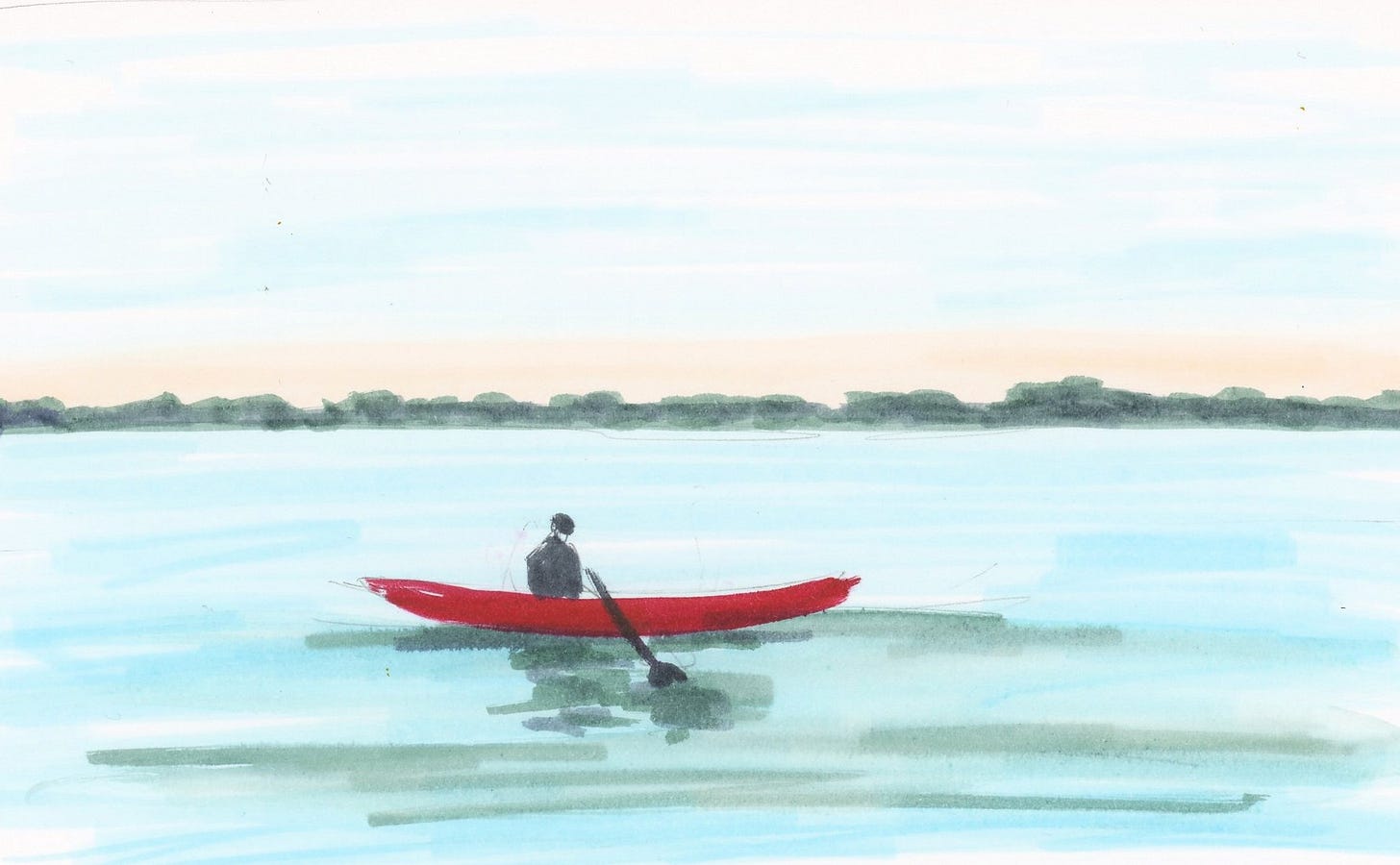
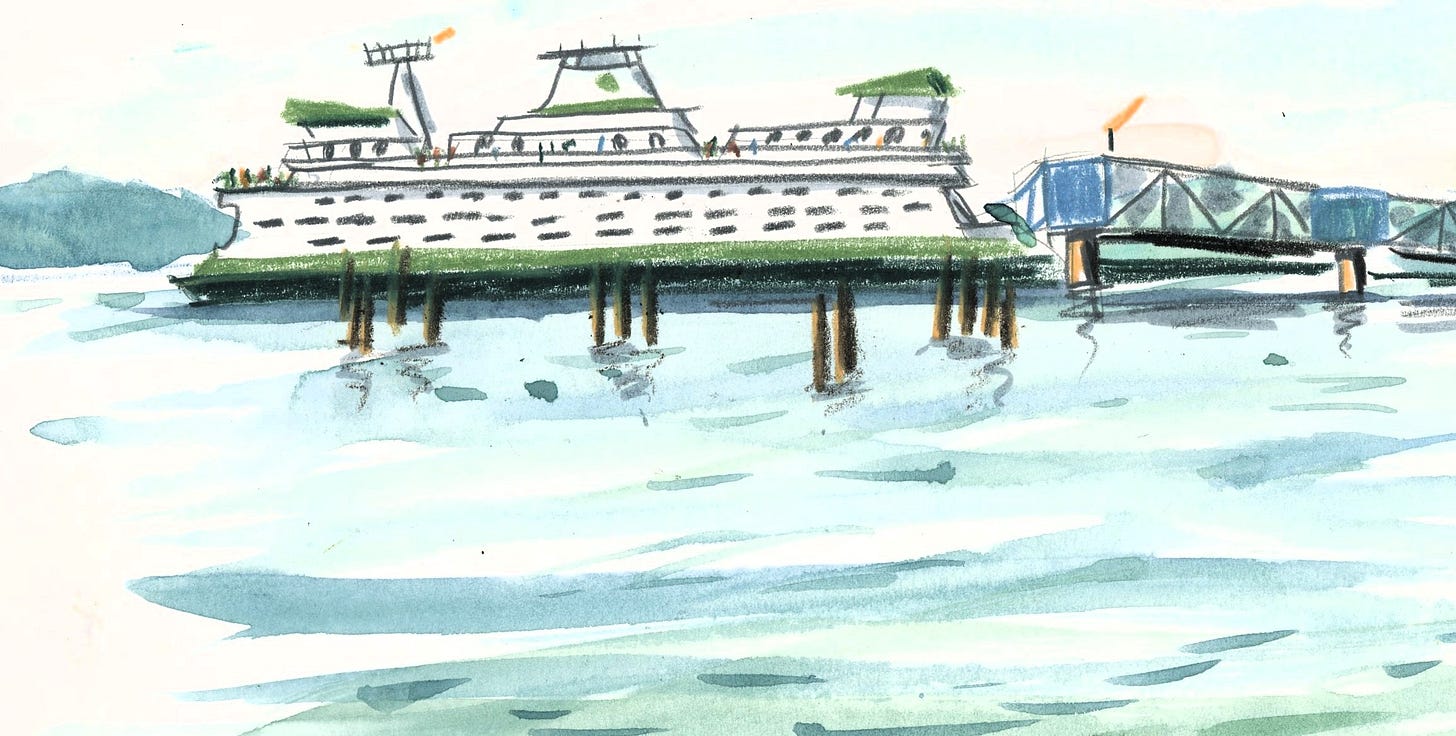
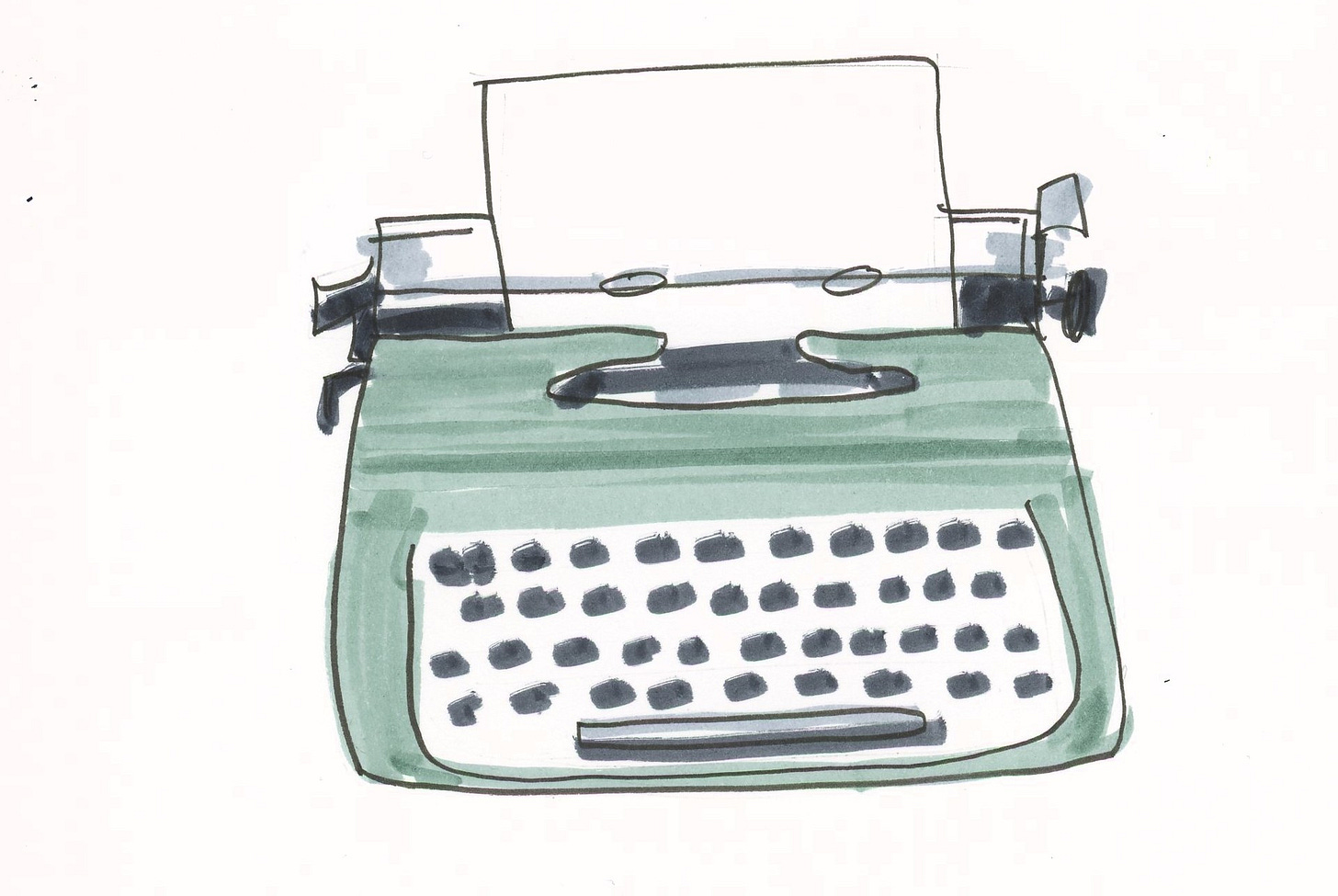
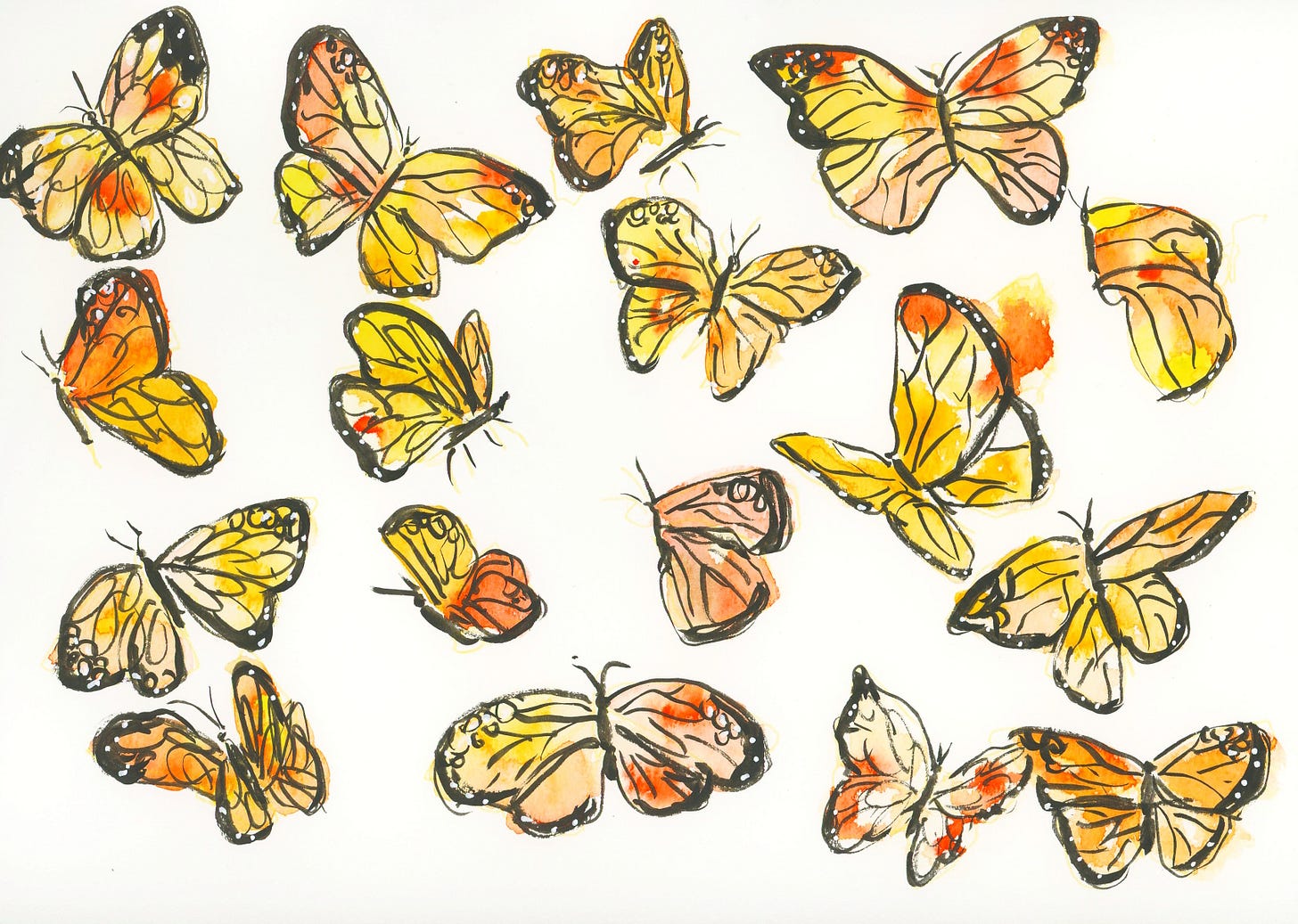
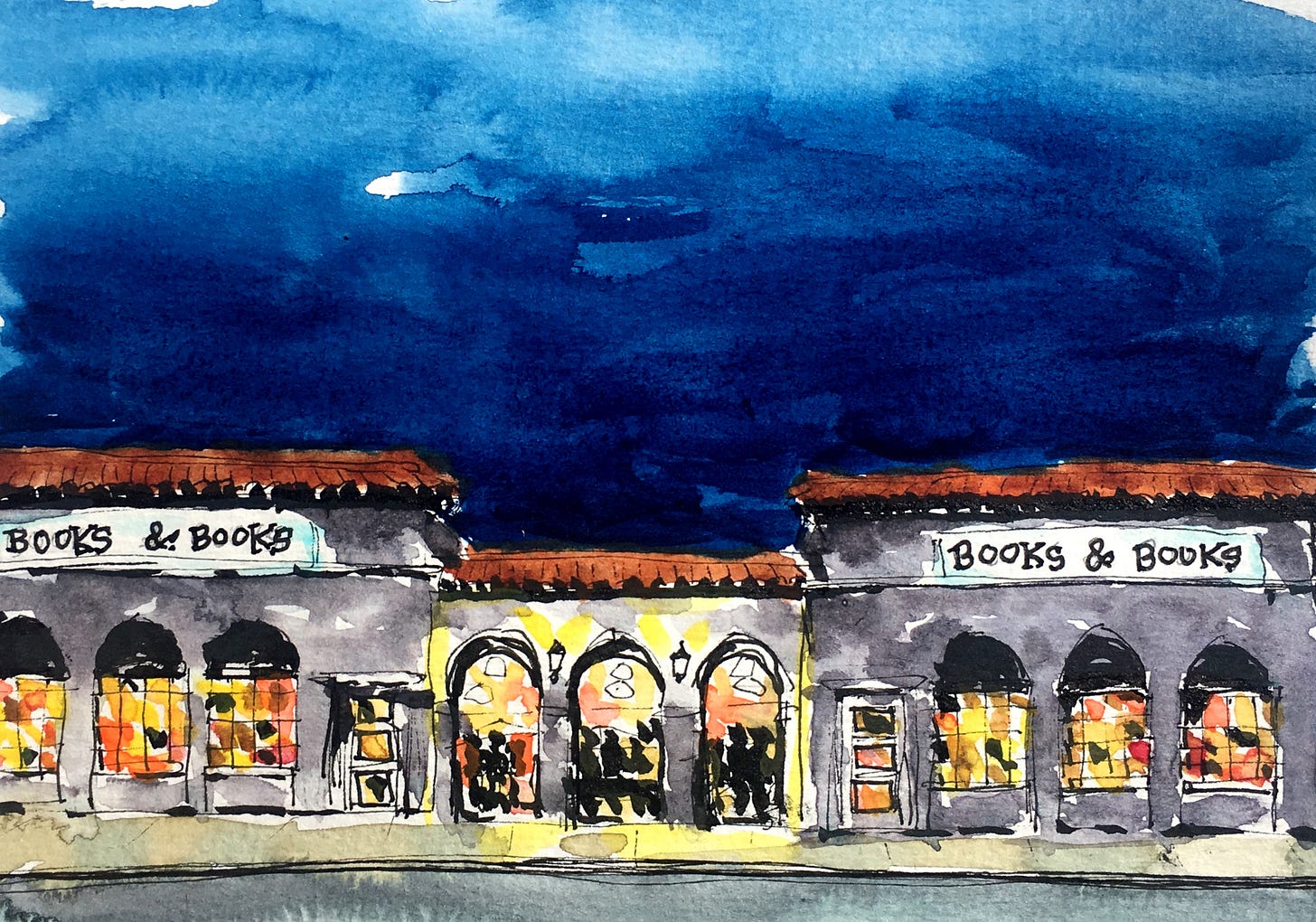
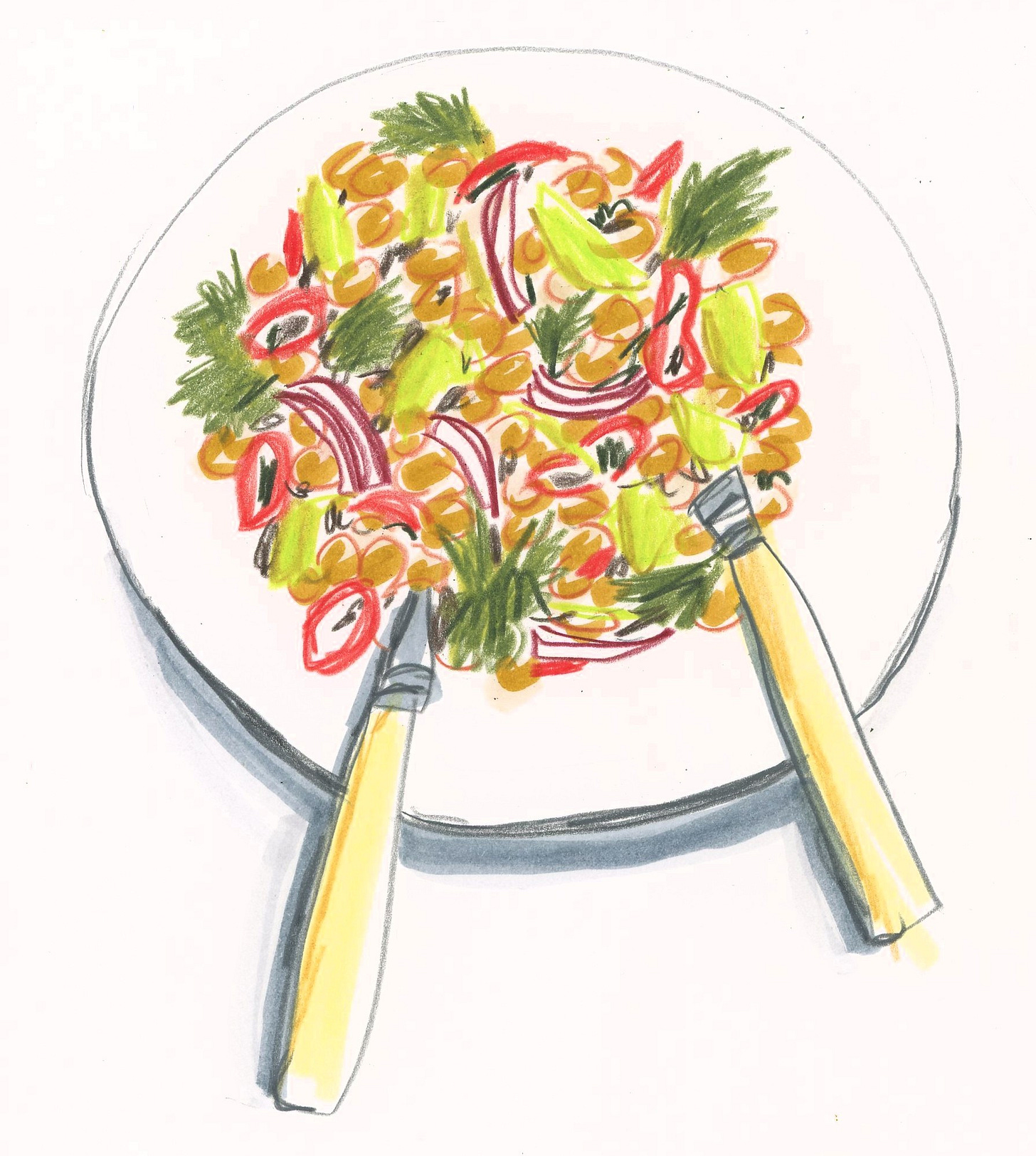
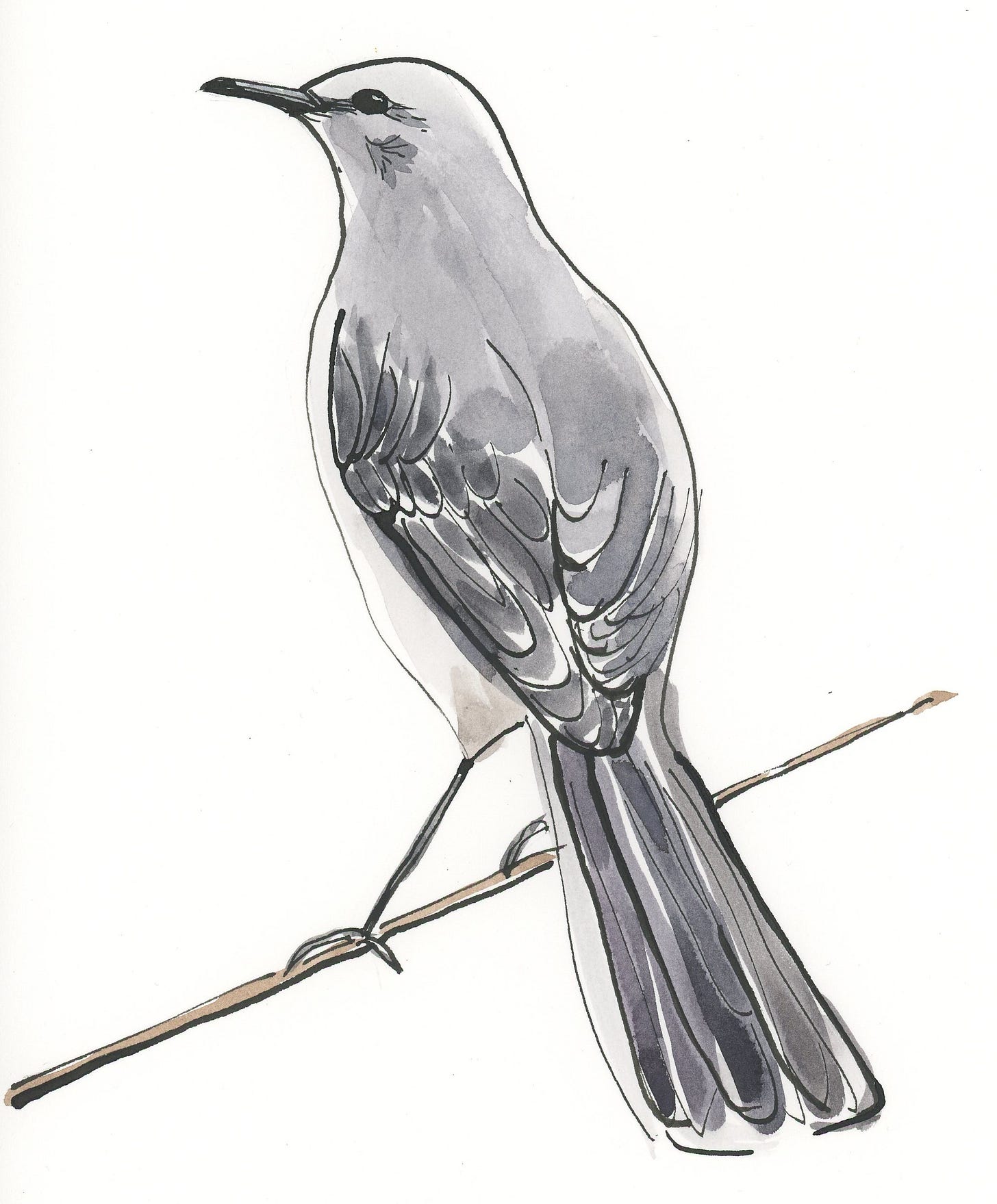
As always, wise words, Amy. I've started a work of fiction this year.... the first ever. And I'm sitting down to write something every day even if it's only a sentence! I'm determined to enjoy it.
In support of Amy saying, “Some books naturally and easily slide into the exact slot that publishers are looking to fill.” My first book with a publisher was accepted based on a plein air journal I did while in Japan. I ended up repainting the whole thing (my choice) to make it a better product. I was largely left to my own devices, so almost everything matched my vision.
However, I firmly believe I wouldn’t have gotten that deal if I hadn’t self published a previous book. That book didn’t sell well and I felt like a failure for years because of it. But it also showed publishers that I was capable of finishing a big project on my own.
Thanks for all the wisdom, Amy!